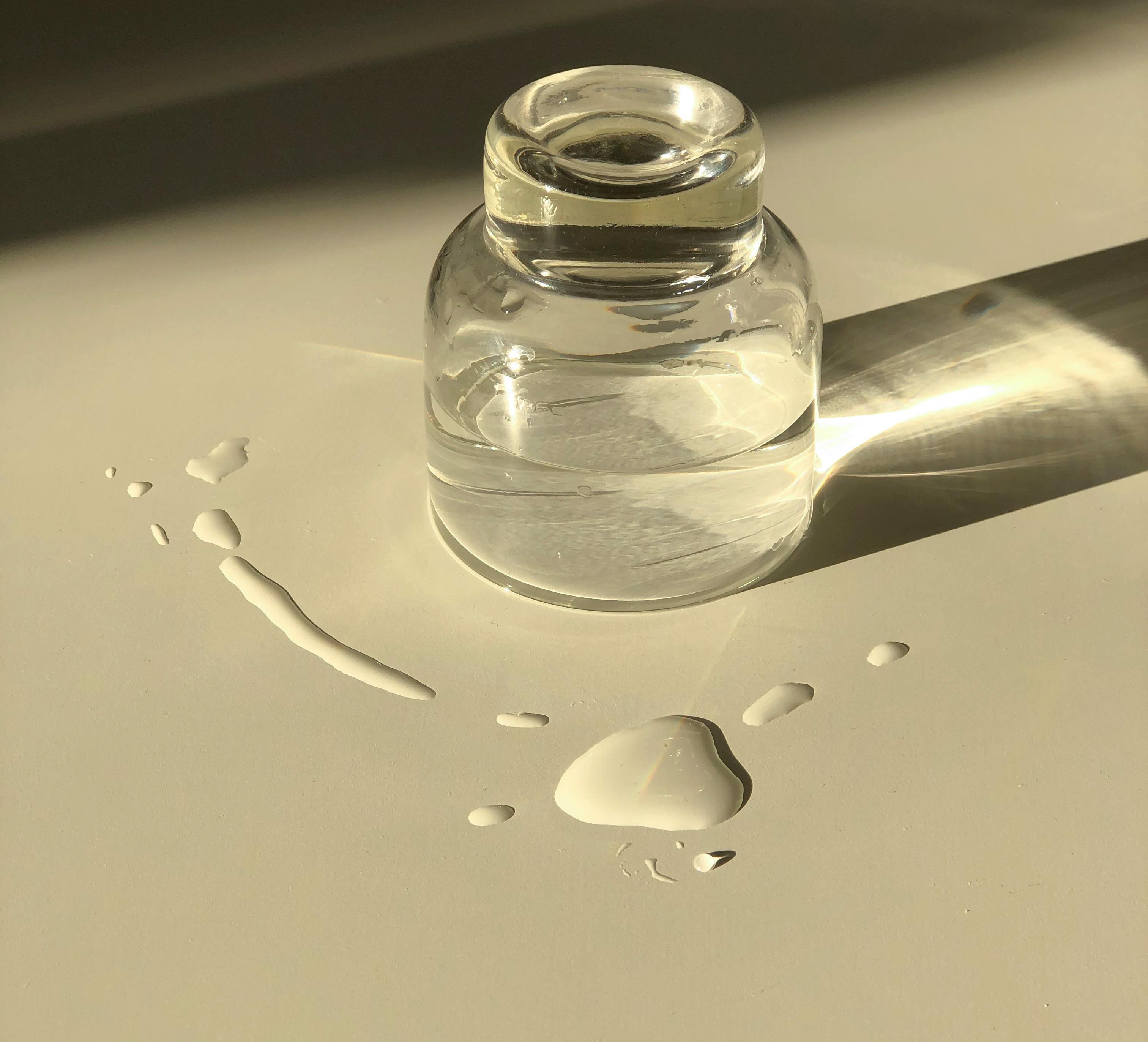A furnace is an essential appliance in a home that provides warmth and comfort during cold weather. However, it can also be the source of an unexpected problem: a water leak. While a water leak from a furnace may seem like an unlikely occurrence, it is actually quite common and can lead to serious damage if not addressed quickly. In this article, we’ll discuss what causes furnace leaks, how to identify them, and what to do once you’ve identified the problem.There are three primary types of water leaks from furnaces: condensate drain line leaks, vent pipe leaks, and flue pipe leaks. Condensate drain line leaks occur when the condensate drain line connected to the furnace is clogged or damaged. Vent pipe leaks occur when the vent pipes connected to the furnace become corroded or damaged. Flue pipe leaks occur when the flue pipes connected to the furnace become cracked or corroded.
Common Causes of Furnace Water Leaks
Furnace water leaks can cause significant damage to your home, so it’s important to identify the source of the leak and take action as soon as possible. While there are a variety of reasons why a furnace may be leaking water, some of the most common causes include:
The condensate drain line is clogged or blocked. The condensate drain line is responsible for removing excess moisture from the furnace, and if it becomes blocked, water can back up and overflow into your home. This often happens when debris such as dirt or dust accumulates in the line.
The condensate pump is malfunctioning. If your furnace has a condensate pump, it may be malfunctioning if you notice water leaking from it. The pump is responsible for moving water away from the furnace and out of your home, so if it breaks down, water can start to accumulate in your home.
The humidifier is leaking. Humidifiers are often installed on furnaces in order to increase the humidity levels in a home. If a humidifier is not properly installed or maintained, it can start to leak and cause water damage.
The air filter is clogged. A clogged air filter can cause problems with airflow throughout your heating system and lead to water accumulation near the furnace. Make sure you change your air filter regularly to reduce the risk of a leak.
If you notice any signs of a furnace water leak, contact an HVAC professional right away. They will be able to inspect your system and identify any potential issues that may be causing the problem.
Signs of a Furnace Water Leak
Water leaks can be a major issue for homeowners, and one potential source of water leaks is the furnace. A leaking furnace can cause significant damage to your home and must be addressed promptly. Fortunately, there are some signs that can alert you to the presence of a water leak from your furnace.
The most obvious sign of a furnace water leak is standing water around the base of the unit. You may also see rust or corrosion on the outside of the unit or condensation on its pipes. This is an indication that there is moisture inside the unit that could be leaking out.
Another telltale sign is a puddle beneath your unit, as well as stains on walls, ceilings, or floors near it. These signs could indicate that water has been dripping from the unit for some time. You should also check any nearby ductwork for signs of moisture or corrosion.
If you notice any unusual sounds coming from your furnace, this could be another indicator that something is wrong with it and should be checked out right away. Pay attention to any strange noises such as hissing, dripping, bubbling, or banging, as these are all potential indications of a furnace water leak.
Finally, if you detect any musty odors in your home it may also signal a problem with your furnace. If you suspect there is a water leak from your furnace, you should contact an HVAC professional as soon as possible for assistance with repairs and maintenance to ensure the safety and integrity of your system and home.
How to Diagnose a Furnace Water Leak
Water leaks from furnaces can cause considerable damage if not detected and addressed quickly. It is important to know how to diagnose a furnace water leak so that repairs can be made as soon as possible. The following steps will help you identify the source of the water and determine the best course of action.
The first step in diagnosing a furnace water leak is to check for visible signs of moisture. If there is standing water or condensation on or near the furnace, this could be an indication that there is an issue with the unit’s seals or gaskets. Additionally, if you notice any rust or discoloration around the furnace, it could be a sign of a water leak.
Another way to diagnose a furnace water leak is to use an infrared camera to detect wet areas in and around the unit. This type of camera can detect temperature differences which can indicate where moisture may be present. If you don’t have access to an infrared camera, you can use a moisture meter instead. This device measures moisture content in walls, ceilings and floors and can help pinpoint potential sources of leakage.
Once you have identified where the water is coming from, it’s time to determine what is causing it. Common causes of furnace water leaks include broken seals or gaskets, clogged drain lines, and cracked heat exchangers. In some cases, it may be necessary to replace worn parts or repair damaged components in order to fix the problem.
It’s important to note that some furnaces may have warranties in place that cover repairs related to water leaks. If your unit has this type of coverage, contact your manufacturer or installer for more information on how they can help resolve the issue. In most cases, they will be able to provide guidance on how best to repair your furnace and prevent future issues from occurring.
Diagnosing a furnace water leak isn’t always easy but with these steps you should be able to identify and address any potential problems quickly and effectively. Be sure to take all necessary safety precautions when working around furnaces and remember that repairs should always be left for qualified professionals when possible.
How to Fix a Furnace Water Leak
If you have noticed water leaking from your furnace, it is important to address the issue as soon as possible. A furnace water leak can be caused by many things, including a damaged flue pipe, condensation from the heat exchanger, or a clogged condensate drain line. Here are some tips on how to fix a furnace water leak.
The first step in fixing a furnace water leak is to identify the source of the leak. You can do this by inspecting the area around the furnace for any signs of moisture or damage. If you find any, you should investigate further to determine what is causing the leak. For example, if there is an accumulation of dust and debris near the furnace, it could be caused by an improperly installed flue pipe.
Once you have identified the source of the leak, you can begin to repair it. If the source is a damaged flue pipe, you should replace it immediately with one that is of similar size and material. If condensation from the heat exchanger is causing the problem, make sure that all vents and filters are clean and free of dirt and debris. This will help reduce future condensation issues.
If your issue is due to a clogged condensate drain line, try cleaning out any debris or blockages in the line before calling for professional help. You can do this by using an air compressor or by using liquid drain cleaner. Be sure to take necessary safety precautions when working with these tools and follow all manufacturer instructions carefully.
No matter what type of issue you are dealing with when it comes to a furnace water leak, it’s important to take care of it quickly so as not to cause further damage or create unsafe conditions in your home or office space. Taking proactive steps such as inspecting your system regularly and making sure all vents and filters are kept clean can help prevent future issues from occurring in your system as well.

Preparing for a Furnace Repair
The first step in preparing for a furnace repair is to make sure that the area around the furnace is safe and clear. Make sure to remove any combustible materials such as paper, rags, or cloth from near the furnace. Additionally, ensure that all furniture and other items are out of the way so that the technician has plenty of room to work. It’s important to be prepared and organized before the technician arrives in order to minimize delays.
Next, it’s important to have all necessary information ready before the technician arrives. This includes the make and model of your furnace, as well as any relevant warranty information. Additionally, it may be helpful to have a list of any questions you may have about the repair process or about potential solutions for your particular problem. Having this information ready can help speed up the repair process and provide more accurate results.
Finally, it’s important to prepare for a furnace repair financially. Many companies offer financing options for repairs, so make sure to ask about these when scheduling an appointment. Additionally, it can be helpful to shop around for different technicians in order to find one who offers competitive rates and quality workmanship. By being prepared financially, you can ensure that you get the best deal possible on your furnace repairs.
Cost of Fixing a Furnace Water Leak
When you discover a furnace water leak, it’s important to fix the issue as soon as possible. It may be tempting to try and repair the leak yourself, but it’s best to leave this task to a professional HVAC technician. The cost of fixing a furnace water leak can vary greatly depending on the severity of the leak and any underlying issues that may be causing it.
The first step in determining the cost of repairing a furnace water leak is to have your HVAC system inspected by a professional technician. During the inspection, they will examine your system for any signs of damage and identify the source of the leak. Depending on what they find, they may need to repair or replace certain parts of your furnace in order to stop the leak. This could include replacing worn or damaged hoses, valves, or gaskets, as well as replacing any corroded parts or seals.
After identifying and repairing any damaged components, your technician will likely need to inspect your entire ductwork system for signs of water damage or corrosion. If they find any areas that are affected by water damage, they may need to seal off those areas in order to prevent further leaks. This could require additional labor and materials such as duct tape or waterproof sealant depending on how extensive the damage is.
In addition to labor and materials costs associated with repairing a furnace water leak, you may also have other costs such as an emergency service fee if you needed immediate assistance or additional charges for parts and supplies that weren’t included in your original quote from the technician. Depending on how long it takes them to complete repairs, you may also be charged an hourly rate for their services.
Overall, the cost of fixing a furnace water leak will vary depending on its severity and any underlying issues that caused it in the first place. It’s important to hire an experienced professional HVAC technician who can properly diagnose and repair any problems with your system so that you can avoid further damages and costly repairs down the line.
The Benefits of Professional Help for a Furnace Leak
When it comes to furnace leaks, it is important to address the issue as soon as possible. A professional HVAC technician can provide assistance in helping to identify and repair the source of the leak. This can help avoid costly repairs and ensure that your home is safe and efficient. Here are some of the benefits of working with a professional when dealing with a furnace leak:
The first benefit is that a professional will be able to accurately identify the source of the leak. This can be difficult to do without expert knowledge or experience. The technician will be able to determine exactly where the leak is coming from, which can make repairs much easier and faster.
Another benefit of working with a professional is that they will be able to assess any potential damages caused by the leak. This may include damage to walls, floors, or electrical wiring caused by water seeping in. In some cases, this may require additional repairs before the furnace can be used again.
Finally, a professional technician will also have access to specialized tools and equipment that are necessary for repairing furnace leaks. These tools are not typically available at local hardware stores and can make repairs easier and more efficient. Additionally, they may also be able to provide advice on how best to prevent future leaks from occurring.
Overall, working with a professional when dealing with furnace leaks can provide many benefits. Not only will they be able to identify and repair any issues quickly, but they may also help prevent further damage from occurring in your home or business. By addressing any potential problems quickly and efficiently, you can ensure that your home or business stays safe and comfortable throughout the year.

Conclusion
Yes, a furnace can leak water and this can cause many problems in your home. If you notice a leak or if you suspect that you may have a leaking furnace, it is important to take action quickly to prevent further damage. You should contact a professional to inspect your furnace and determine the cause of the problem so that it can be addressed and repaired before further damage occurs.
It is also important to ensure that your furnace is serviced regularly by a qualified technician in order to avoid any future problems. Regular maintenance can help to keep your furnace running in peak condition and prevent any water leaks from occurring. Taking the time now to properly maintain your furnace can save you time, money, and stress in the long run.

